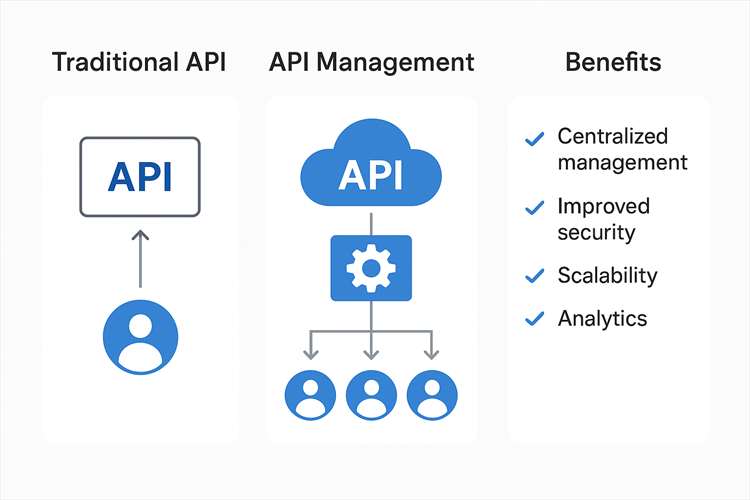
Why Azure API Management is Essential for Modern Applications
APIs (Application Programming Interfaces) have become the backbone of today’s digital economy. From mobile apps and e-commerce platforms to enterprise integrations and IoT systems, APIs connect services and enable innovation.
However, managing APIs at scale is not as simple as exposing an endpoint. Issues like security, performance, monitoring, and developer experience quickly arise. This is where Azure API Management (APIM) comes in.
What is Azure API Management?
Azure API Management is a fully managed service by Microsoft Azure that allows organizations to publish, secure, monitor, and analyze APIs in one central place. It acts as a gateway between your backend services and the consumers of your APIs.
Instead of developers directly calling your APIs, they interact through APIM, which provides control, insights, and added functionality.
Benefits of Azure API Management
1. Centralized Management
With APIM, all your APIs—regardless of where they are hosted—can be managed from one dashboard. This makes versioning, updates, and access much easier to handle.
2. Improved Security
APIM supports authentication, authorization, rate limiting, and IP filtering out of the box. This ensures your APIs are protected against abuse, unauthorized access, and denial-of-service attacks.
3. Scalability
As traffic grows, APIM helps scale your APIs efficiently without putting extra load on your backend systems. Features like caching and throttling further improve performance.
4. Analytics and Monitoring
APIM provides built-in dashboards to track usage, identify bottlenecks, and understand consumer behavior. This data is valuable for both technical and business decision-making.
5. Developer Experience
With its built-in Developer Portal, APIM makes it easy for developers to discover APIs, read documentation, and even test them. This accelerates onboarding and encourages reuse of your APIs.
Traditional API vs. API Management
A traditional API provides basic access between consumer and service. While this works initially, it lacks visibility, control, and governance.
By contrast, API Management provides:
-
Governance at scale
-
Security enforcement
-
Analytics and insights
-
A platform for innovation
This transforms APIs into products that can be shared securely and efficiently across teams, partners, or external customers.
Real-World Use Cases of APIM
-
Microservices architecture: Unify access across distributed services.
-
Mobile apps: Securely expose APIs to mobile clients.
-
Partner integration: Share APIs with external vendors while controlling access.
-
Legacy modernization: Wrap old services with a modern, managed API layer.
Conclusion
In today’s interconnected digital world, APIs are more than just code—they are business assets. Azure API Management ensures these assets are secure, scalable, and deliver maximum value.
If you’re running multiple APIs or planning to expose your services to a wider audience, APIM is not just an option—it’s a necessity.
Thanks, for reading the blog, I hope it helps you. Please share this link on your social media accounts so that others can read our valuable content. Share your queries with our expert team and get Free Expert Advice for Your Business today.
